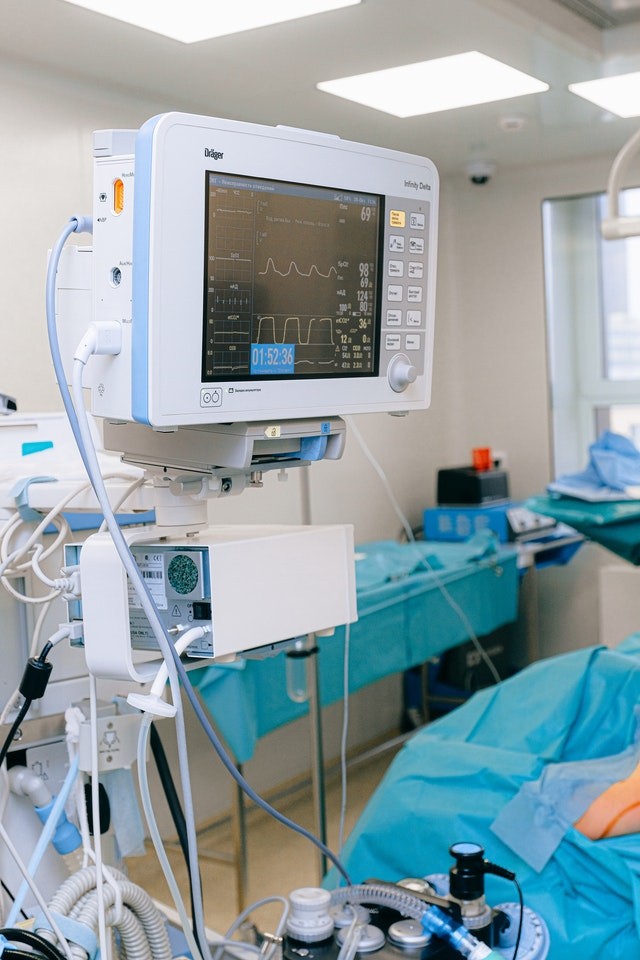
The COVID-19 pandemic has led to an increased demand for medical equipment for critically ill patients. Often, the consequence of coronavirus is pneumonia and breathing problems, so the demand for breathing apparatus is vast. However, as the number of seriously sick patients has increased, there is less available equipment and hospitals are working at their full capacity. People also fear that the shortage of staff and equipment in the public health sector can have critical consequences in the U.S, but also in other countries.
Due to the seriousness of the situation, there was a need to find a different solution. Physicians and scientists are continuously investigating potential alternatives to replace the ICU ventilators. The machine that could be used in a different way from the intended one, and could help fulfill the hospitals' equipment gap is an anesthesia machine.
This replacement could allow hospitals to take more patients and cure critically ill ones who can barely breathe or even not at all due to pneumonia complications. Moreover, as it turns out, the alternative method might be even more efficient as anesthesia machines use oxygen much more efficiently.
What Is an Anesthesia Machine?
An anesthesia machine integrates several medical devices into a single system that improves anesthesia delivery's safety and efficiency. It administers oxygen, but also anesthetic gases. Additionally, it functions as a respirator and can be helpful in the administration of medicines. It monitors blood pressure, pulse rate, and temperature. Click here to investigate the types of anesthesia machines - depending on the health condition of the patient, a specific type might be best suited.
How Fast Can It Happen?
The United States has roughly 173,000 ventilators scattered across the country, according to the Center for Health Security at Johns Hopkins University. However, the number of patients could be 31 times higher. What matters is how the ventilators can be replaced with anesthesia machines if an emergency occurs.
It doesn't require much of a change to convert the anesthesia machine into a ventilator. It's just a replacement of a single vent. As a result, we could quickly gain around 70,000 ventilators in the U.S that could be used in hospitals and save patients' lives. To be more precise, it's just the addition of a heat and humidity exchange filter to the breathing circuit and the removal of anesthetic gas vaporizers. It's a matter of minutes, and when it comes to human life, each minute matters.
Virus Spreading
COVID-19 is a disease that's easily transmitted from one patient to another. The ICU ventilators should not be shared by more than one patient, as then the transmission from one ill to another is of a higher probability. Specialists warn of the sharing of the ventilators as it can have the opposite outcome to the expected one and can put patients at risk rather than help them.
Additionally, there is a danger that while using a shared ventilator, the amount of oxygen can be not adequately adjusted to the next patient. Consequently, they can get too much or too little oxygen due to the pressure differences. Replacing them with anesthesia machines with special filters might lower the risk and allow them to be used for subsequent patients.
Specialists Needed
Anesthesiologists' work will be essential if this method becomes more popular, as their specific knowledge is required to operate the machines properly. Anesthesiologists are specifically trained to use these machines, and if so many ventilators were to be replaced with them, the demand for specialists would also increase.
Replacing ICU ventilators would create a space for anesthesiologists to help the hospital enormously or require their assistance and supervision. As the whole process of giving the anesthesia drugs is about putting a patient in a coma-like state, improper maintenance can lead even to death.
A certified registered nurse anesthetist can assist in setting up the machine to be used as a ventilator. However, there might be a shortage of medical staff or the other professionals might not be familiar with the equipment. In that case, it's not recommended to use the machine even in case of an emergency.
Conclusions
Even though this use of anesthesia machines isn't yet popular in many countries, they are an interesting alternative and could provide hope for millions of people. They can be just a temporary solution to the ventilatory shortage.
It is a life-saving measure that, if it gains traction, could mean survival for plenty of patients as we are put in extreme circumstances due to the coronavirus pandemic. There's a high probability that the elective procedures would be omitted in case of this replacement, as there's no time and place for doing so. Let's hope that thanks to human innovation, we'll find yet other ways of making the current pandemic more manageable.












